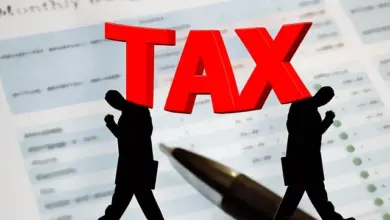Cost of Owning a Car in Italy: Taxes and Expenses

Owning a car is often seen as a symbol of freedom and convenience, but in Italy, it comes with its own set of financial responsibilities. From taxes to maintenance costs, the expenses associated with owning a vehicle can add up quickly. If you’re considering purchasing a car in Italy or simply want to understand the financial implications, this guide will walk you through everything you need to know about the cost of owning a car in Italy, including taxes, insurance, fuel, and more.
1. Purchase Price and Registration Fees
The first major expense when buying a car in Italy is the purchase price itself. Whether you’re buying a brand-new vehicle or a used one, the initial cost can vary significantly depending on the make, model, and year of the car.
Once you’ve chosen your vehicle, you’ll need to register it with the Italian authorities. The registration process involves paying a registration tax (Imposta Provinciale di Trascrizione) , which is typically around 10-15% of the car’s value for new vehicles. For used cars, the tax is calculated based on the difference between the original purchase price and the current market value.
Additionally, there are administrative fees for registering the car, which can range from €50 to €100, depending on the region.
2. Annual Car Taxes (Bollo Auto)
One of the most significant ongoing costs of owning a car in Italy is the annual car tax, known as Bollo Auto . This tax is based on the engine size and power of the vehicle, measured in kilowatts (kW). The rates vary by region, but on average, you can expect to pay anywhere from €200 to €1,000 per year, depending on the type of car you own.
For environmentally friendly vehicles, such as electric or hybrid cars, there are often tax incentives or reductions. Some regions even offer exemptions for the first few years of ownership. However, if you own a high-emission vehicle, you may face higher taxes or additional environmental fees.
3. Insurance Costs (Assicurazione Auto)
Car insurance is mandatory in Italy, and the cost can be one of the largest expenses for car owners. There are three main types of car insurance policies:
- Third-Party Liability Insurance (RCA): This is the minimum legal requirement and covers damages caused to other people or property. The cost of RCA varies depending on factors such as your age, driving history, location, and the type of car you own. On average, Italians pay between €400 and €800 per year for basic coverage.
- Comprehensive Insurance (Kasko): This optional policy covers damages to your own vehicle, including theft, vandalism, and accidents. Comprehensive insurance can significantly increase your annual premium, often costing an additional €500 to €1,500 per year.
- Fire and Theft Insurance: Another optional add-on, this policy protects against fire damage and theft. It’s particularly important in cities with higher crime rates, where car theft is more common.
Insurance premiums can also vary by region. For example, drivers in southern Italy tend to pay higher rates due to higher accident and theft rates compared to northern regions.
4. Fuel Costs
Fuel prices in Italy are among the highest in Europe, making it a significant ongoing expense for car owners. As of 2023, the average price of gasoline (benzina) is around €1.80 to €2.00 per liter, while diesel costs slightly less at approximately €1.60 to €1.80 per liter.
If you drive frequently, especially long distances, fuel costs can quickly add up. To save money, many Italians opt for smaller, more fuel-efficient cars or switch to diesel engines, which tend to offer better mileage.
5. Maintenance and Repairs
Regular maintenance is essential to keep your car running smoothly and avoid costly repairs down the line. In Italy, routine services such as oil changes, tire rotations, and brake checks can cost anywhere from €100 to €300, depending on the type of car and the service provider.
Repairs, on the other hand, can be more expensive, especially for luxury or imported vehicles. Labor costs in Italy are relatively high, and parts for certain models may need to be imported, adding to the overall expense. It’s important to budget for unexpected repairs, as older cars are more prone to mechanical issues.
6. Parking and Tolls
Parking in Italian cities can be a challenge, both in terms of availability and cost. Many cities have strict parking regulations, and fines for illegal parking can be steep, often ranging from €50 to €100. In major cities like Rome, Milan, and Florence, you may need to pay for parking in designated areas, with hourly rates ranging from €1 to €5.
If you frequently travel on highways, you’ll also need to account for toll fees. Italy has an extensive network of toll roads (autostrade), and the cost depends on the distance traveled. On average, you can expect to pay between €0.10 and €0.20 per kilometer, which can add up on long trips.
7. Environmental Regulations and Fees
Italy has been taking steps to reduce vehicle emissions and promote sustainable transportation. In some cities, such as Milan and Rome, there are restrictions on high-emission vehicles, particularly in city centers. These areas, known as Zona a Traffico Limitato (ZTL) , require special permits, and driving without one can result in hefty fines.
Additionally, some regions impose extra fees on older, more polluting vehicles. For example, cars that do not meet Euro 4 emission standards may face additional charges when entering certain urban zones.
8. Depreciation
While not a direct expense, depreciation is an important factor to consider when calculating the total cost of owning a car. Cars lose value over time, and in Italy, depreciation can be particularly steep for certain models. On average, a new car loses about 20-30% of its value within the first year and up to 50% after three years. This means that if you plan to sell your car in the future, you may not recoup much of your initial investment.



